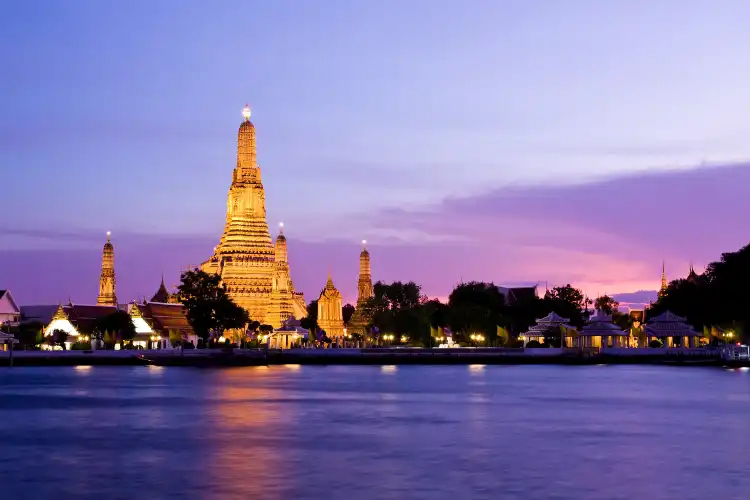
Search Bangkok Hotels
Enter your dates for the latest hotel rates and availability.
3474 hotels in Bangkok
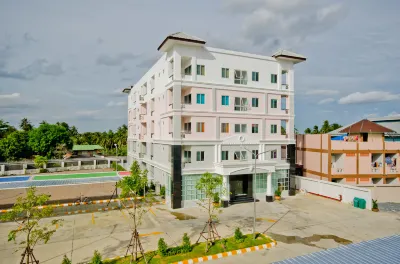
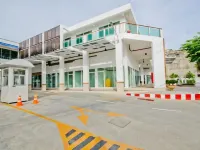









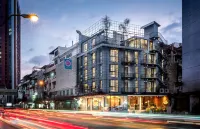




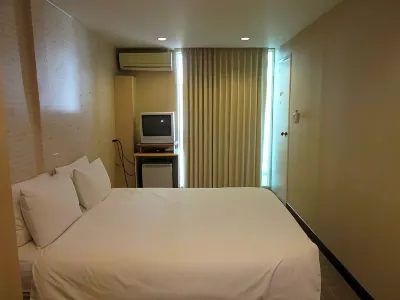
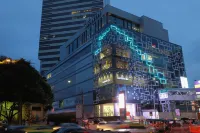

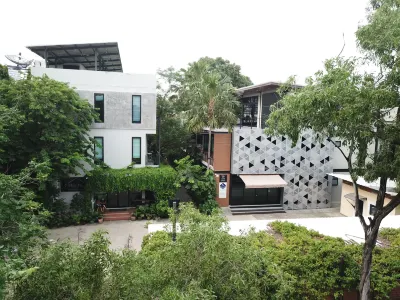










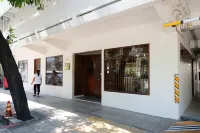
Bangkok, the capital city of Thailand, is a bustling city known for its vibrant street life and cultural landmarks. Bangkok is famous for its lively nightlife, world-class shopping, and delicious street food. Key attractions include the Grand Palace, Wat Arun, Wat Phra Kaew, and the floating markets. Plan your trip to Bangkok now!
Average Cost of Hotels in Bangkok
Bangkok offers a wide range of hotels from budget to luxury. Here is a overview of the cost of hotels in Bangkok:
- Budget Hotels: 1-2 star hotels or guesthouses that offer basic amenities. The average cost can range from 500 to 1,500 Thai Baht ($15 to $45 USD) per night.
- Mid-range Hotels: 3-star hotels that offer more comfortable accommodations and additional amenities. The average cost can range from 1,500 to 3,500 Thai Baht ($45 to $105 USD) per night.
- Luxury Hotels: 4-5 star hotels that offer high-end accommodations, top-notch service, and a wide range of amenities. The average cost can range from 3,500 to 10,000 Thai Baht ($105 to $300 USD) per night.
Top Attractions for First-Time Visitors
- The Grand Palace: The Grand Palace is a complex of buildings located in Bangkok, Thailand. Constructed in 1782, the palace is a significant historical and cultural landmark in Thailand, showcasing the architectural creativity and craftsmanship of the Thai people.
- SEA LIFE Bangkok Ocean World: SEA LIFE Bangkok Ocean World is one of the largest aquariums in Southeast Asia, which situated two storeys underneath the Siam Paragon shopping mall and covers approximately 10,000 square meters.
- Golden Dome Cabaret Show: The Golden Dome Cabaret Show is a popular entertainment event, which features a spectacular performance by transgender artists, showcasing their talent in music, dance, and acting. The show is renowned for its extravagant costumes, stunning choreography, and impressive stage design.
- Safari World Bangkok: Safari World Bangkok is one of the most popular tourist attractions in Thailand. It is a drive-in zoological park divided into Safari Park and Marine Park.
Better to Know Before Visiting Bangkok
Before planing the trip to Bangkok, it's essential to keep a few things in mind.
- Weather: Bangkok has a tropical monsoon climate, so it's hot and humid throughout the year. The rainy season is from May to October, and the dry season is from November to February. It's best to pack light, breathable clothing and a raincoat or umbrella.
- Currency: The official currency is the Thai Baht (THB). It's recommended to have some cash on hand for small vendors and taxis, although credit cards are widely accepted in most places. There are plenty of ATMs and currency exchange booths around the city.
- Transportation: Bangkok's traffic is notorious, so it's often quicker to use the BTS Skytrain or MRT Subway. Taxis are also affordable, but make sure they use the meter. Tuk-tuks are a fun way to get around, but agree on a price before the journey to avoid being overcharged.
- Respect the Culture: Thailand is a Buddhist country, and it's important to respect their customs. Dress modestly when visiting temples (cover your shoulders and knees), and never touch someone's head or point your feet at them, as these are considered disrespectful.
- Street Food: Bangkok is famous for its street food, and it's a must-try for any visitor. However, choose vendors that are busy (a sign that the food is fresh), and avoid uncooked food to prevent food poisoning.
Getting Around in Bangkok
Bangkok offers a variety of transportation options to navigate through the city. Here's an overview of the main transport options available in Bangkok:
- BTS Skytrain: The Bangkok Mass Transit System, commonly known as the BTS Skytrain, is a fast, reliable, and convenient way to avoid traffic jams, with two main lines: the Sukhumvit Line and the Silom Line.
- MRT: The Metropolitan Rapid Transit or MRT is Bangkok's underground metro system. It complements the Skytrain with several lines that cover different parts of the city, including the Blue Line and the Purple Line.
- BRT: The Bangkok BRT (Bus Rapid Transit) is a bus service that operates on dedicated bus lanes in parts of the city, providing a faster alternative to regular bus services.
- Buses: Bangkok has an extensive bus network operated by the Bangkok Mass Transit Authority (BMTA) and other private operators. Buses are an affordable way to travel, but they can be slower due to traffic congestion.
- Taxis: Metered taxis are widely available throughout Bangkok. They are relatively inexpensive and convenient for door-to-door travel. However, traffic congestion can significantly affect travel times.
- Tuk-Tuks: These iconic three-wheeled vehicles are a tourist favorite for short trips. While they can be fun and provide a local experience, they are often more expensive than taxis and have no meter, so fares should be negotiated beforehand.
Temperature and Best Time to Visit Bangkok
The best time to visit Bangkok is from November to February during the cool and dry season. During this time, the weather is most favorable with less rain and more manageable temperatures, making it easier to explore the city. This is also the peak tourist season, so popular attractions may be crowded.
If you want to avoid the crowds, consider visiting during March to May or September to October. However, keep in mind that these periods can be hot and humid, and September and October are often the wettest months due to the monsoon season.
Average Temperature
• January to March: 30.37°C during the day, 25.5°C at night
• April to June: 31.93°C during the day, 27.77°C at night
• July to September: 30.59°C during the day, 26.75°C at night
• October to December: 29.41°C during the day, 24.96°C at night
What to Eat in Bangkok
Bangkok, the capital city of Thailand, is renowned for its vibrant street food scene and diverse culinary offerings. Here are several popular foods that you should try when visiting Bangkok:
- Pad Thai: Perhaps the most famous Thai dish, Pad Thai is a stir-fried noodle dish typically made with rice noodles, eggs, tofu, tamarind pulp, fish sauce, dried shrimp, garlic, red chili pepper, and palm sugar. It's often served with lime wedges and chopped roasted peanuts.
- Tom Yum Goong: This is a hot and sour Thai soup usually cooked with shrimp (goong). The soup is made with lemongrass, kaffir lime leaves, galangal, lime juice, fish sauce, and crushed chili peppers.
- Som Tam: Also known as green papaya salad, Som Tam is a spicy salad made from shredded unripe papaya. It usually includes tomatoes, carrots, peanuts, dried shrimp, runner beans, palm sugar, tamarind pulp, fish sauce, lime juice, garlic, and plenty of chilies.
- Green Curry (Gaeng Keow Wan): Thai green curry is made from green curry paste, coconut milk, bamboo shoots, chicken, Thai basil, and vegetables. It's aromatic and can range from mildly spicy to very spicy.
- Mango Sticky Rice (Khao Niew Mamuang): A popular dessert, especially during the mango season. It consists of ripe mangoes served with sweet, sticky rice and topped with coconut milk.
- Massaman Curry: A rich, relatively mild Thai curry that is an interpretation of a Persian dish. Massaman curry is typically made with coconut milk, potatoes, roasted peanuts, bay leaves, sugar, cinnamon, and tamarind sauce, and it can be made with chicken, beef, or lamb.
Top hotel picks in Bangkok
Bangkok hotels with tasty breakfast
Top four-star Bangkok hotels
Latest Reviews for Bangkok hotels
Travelers reviews about Bangkok attractions
FAQs about Bangkok hotels
What are the best hotels in Bangkok?
Whether you're planning a business trip or a vacation, Bangkok has many top-rated hotels to choose from. NASA BANGKOK, B Your Home Hotel Donmueang Airport Bangkok and Eastin Grand Hotel Phayathai are among the best choices for your stay. How much is a hotel in Bangkok on average?
The average price for hotels in Bangkok is CAD 142 on weekdays, and CAD 145 on weekends (Friday-Saturday).What are the best hotel deals in Bangkok?
Find the best hotel deals and promotions on Trip.com, available year-round for both first-time and loyal users. Please check the promotions page to see what promotions are available now on Trip.com.Which hotels in Bangkok offer airport shuttle services?
Getting to your accommodation in Bangkok is easy with hotels that offer airport shuttle services. NASA BANGKOK, B Your Home Hotel Donmueang Airport Bangkok and Eastin Grand Hotel Phayathai provide convenient airport shuttle services. What are the best pet-friendly hotels in Bangkok?
Kimpton Maa-Lai Bangkok, an IHG Hotel, Ibis Bangkok Riverside and Ibis Bangkok Siam welcome pets. Bring your pets along for an enjoyable stay!What are the best hotels with a spa in Bangkok?
A spa hotel can make your trip more enjoyable with relaxing amenities. NASA BANGKOK, B Your Home Hotel Donmueang Airport Bangkok and Eastin Grand Hotel Phayathai are great choices for spa hotels offering quality services. What are the best luxury hotels in Bangkok?
In Bangkok, you’ll find a range of luxury hotels known for their unique designs, premium amenities, and outstanding experiences. Eastin Grand Hotel Phayathai, Somerset Rama 9 Bangkok and Twin Towers Hotel are excellent luxury hotels offering outstanding experiences. Which hotels in Bangkok provide fitness facilities?
NASA BANGKOK, B Your Home Hotel Donmueang Airport Bangkok and Eastin Grand Hotel Phayathai include fitness facilities, so you can maintain your routine while traveling. Stay on track with your fitness goals while on the go!Which hotels in Bangkok have pools?
B Your Home Hotel Donmueang Airport Bangkok, Royal Rattanakosin Hotel and Asia Hotel Bangkok are excellent options for hotels with swimming pools. Book your stay to enjoy the pool and make your trip more enjoyable.Which hotels in Bangkok have the best breakfast?
Begin your day with a tasty and satisfying breakfast! Eastin Grand Hotel Phayathai, Somerset Rama 9 Bangkok and Twin Towers Hotel provide the best breakfast to start your day. What are the best hot spring hotels in Bangkok?
Hotels with hot springs provide a perfect way to relax and recharge during your stay. Livotel Grand Hotel Hua Mak Bangkok, Homm Sukhumvit34 Bangkok - a brand of Banyan Group and Avani Ratchada Bangkok include hot springs for a truly relaxing experience. Hotel Info for Tourists
| Highest Price | CAD 2,028 |
|---|---|
| Lowest Price | CAD 14 |
| Number of Reviews | 340,677 |
| Number of hotels | 15,085 |
| Average Price(Weekday Night) | CAD 142 |
| Average Price(Weekend Night) | CAD 145 |